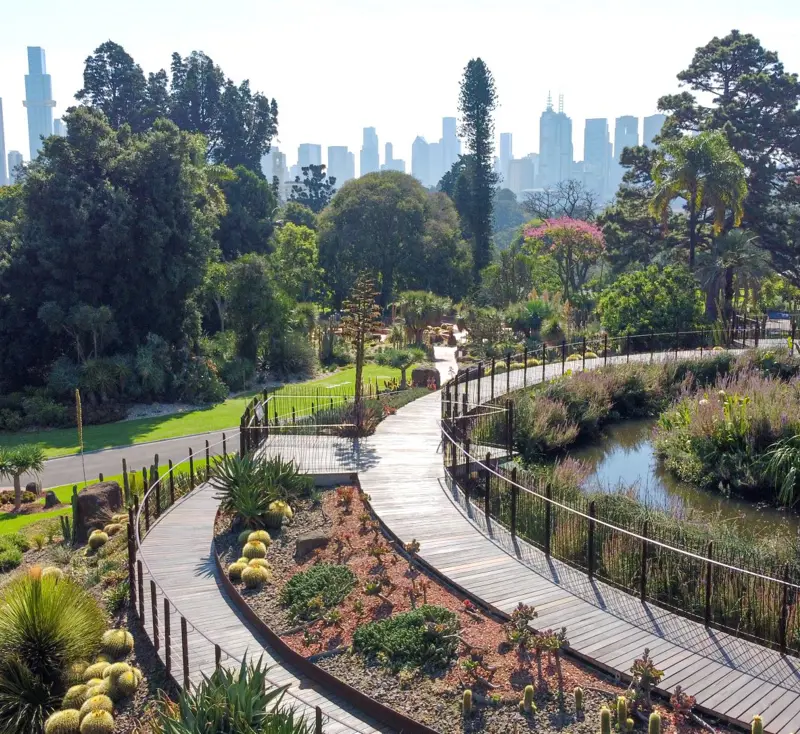
Climb Guilfoyle's Volcano
Melbourne is built on a 50-million-year-old lava flow!
You might have noticed the basalt volcanic rock in some of the garden beds. Inspired by this fun fact, in 1876, the Garden’s second director Guilfoyle constructed a reservoir within a volcano-shaped hill at the garden’s highest point to gravity feed water throughout the gardens.
The ‘volcano’ is still used for water storage but is now part of a clever garden-wide water reticulation and treatment system.
Speaking of clever, on the sides of the ‘volcano’, the landscape architect has used red rock mulch combined with plantings of masses of succulents to mimic bubbling and flowing lava. Other striking accent plants used are reminiscent of a desert landscape.
Listen to Sonic Snippets: from the Sonica Botanica archive
[Intro] Sonic Snippets: from the Sonica Botanica archive
[Andrew Laidlaw]: My name's Andrew Laidlaw and I've worked at the Botanic Gardens for over 20 years.
This Garden has a history of plant collection. It's a botanic gardens, and when the Garden started under Dallachy and Arthur and then onto Mueller, water was always a problem, we couldn't expand the Gardens because we didn't have the capacity to water the plants, particularly through our long dry summers.
In 1870, William Guilfoyle arrives. He designates areas that are very dry and hot and quite hostile. And these were areas that he planted lots of succulent and arid plant material and a lot of it was available. So, sort of between 1870 to 1908, he was planting this material in the Gardens. So it's always been part of our history.
Through the 50s, 60s and 70s, that became not fashionable. And many of the Directors in the Botanic Gardens, loved camellias, azaleas and rhododendrons; they stripped a lot of the material out and put the things back in that they loved. So we lost a lot! Guilfoyle's rockeries and succulent plant material was all covered up by this more flowery plant material.
When we came to do the Volcano, we reintroduced in some ways what was once there by Guilfoyle. And we had members of the public - and we even got a pink slip from parliament - telling us that we were turning the Gardens into a succulent and arid plant collection and we mustn't do that. That's not what the people of Melbourne want. But in many ways, we were going back to what Guilfoyle had planned for some of those areas. So it does have lineage in here, and it makes sense because of our climate and where our climate is heading. There's many good reasons that we should be using this type of plant material.
